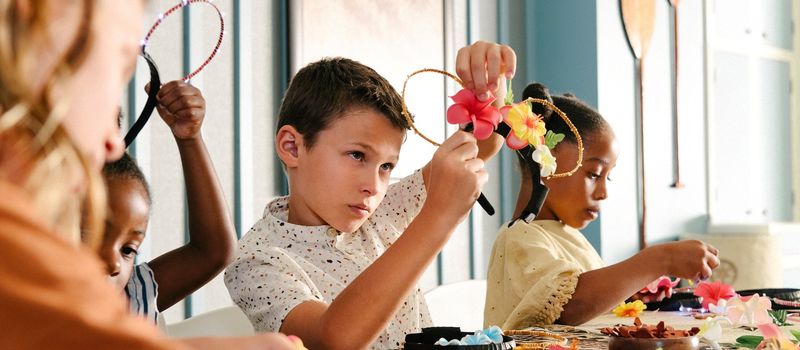10 Lost Skills Every ’60s Kid Knew by Heart—And 5 We Need To Bring Back

Ah, the ’60s! A groovy time of peace signs, flower power, and rock ’n’ roll—and tucked between all that tie-dye and transistor radios were some seriously underrated life skills.
Every kid growing up in that era had a toolbox of know-how, passed down by parents, picked up on the playground, or learned the hard way (usually involving a skinned knee or a jammed finger).
These weren’t just fun tricks—they were survival skills for everyday life. Fast forward to today, and many of these gems are all but forgotten, lost in the glow of screens and smart devices.
But maybe it’s time for a comeback. So let’s take a stroll down memory lane and revisit 15 lost skills every ’60s kid knew by heart—from riding a bike without hands to fixing things with duct tape and pure determination.
Because let’s face it, the good old days had some seriously good ideas.
1. Fixing a Flat Bike Tire

Remember the days when a flat tire wasn’t the end of the world? Armed with a patch kit and some elbow grease, any ’60s kid could get their bike ride-ready in under an hour. Forget roadside assistance; we were our own rescue team.
The process involved locating the hole, roughing up the area with a little sandpaper, and applying the patch with precision. It was a rite of passage, and we wore our grease-stained hands like badges of honor.
Today, it might seem easier to just call Dad or AAA, but back then, independence was key. Fixing a flat was not just about the bike; it was about self-reliance and learning to tackle challenges head-on. Plus, you got to brag about your handiwork at school the next day!
2. Making a Perfect Paper Airplane

Ah, the art of paper aviation! In the ’60s, every kid was a miniature aeronautics engineer, crafting paper planes with impeccable precision. Making a perfect paper airplane was more than a pastime—it was a science and an art.
Not just one, but three foolproof designs circulated through schoolyards. Each fold, crease, and flap meant the difference between a crash landing and a glorious flight.
While today’s kids might have drone technology, nothing beat the satisfaction of watching your meticulously crafted paper plane soar across the classroom, much to the teacher’s dismay. It was a cheap thrill that encouraged creativity and fostered friendly competition.
3. Reading a Map

Before GPS turned us all into digital zombies, reading a map was the ultimate navigation skill. Every backseat adventure included a trusty map, and deciphering it was a rite of passage.
Unfolding one of those massive paper beasts was half the battle. Once fully extended, you’d trace the route with a finger, looking for landmarks and calculating distances.
It was like a puzzle, and mastering it meant you could find your way to Grandma’s house without a hitch. Today, while our phones do all the heavy lifting, there’s something nostalgic about the tactile challenge of a map—and the satisfaction when it all lines up.
4. Whittling with a Pocket Knife

Pocket knives were practically a rite of passage in the ’60s, and whittling was an art form. Every kid had a trusty knife in their pocket, ready to transform an ordinary stick into a masterpiece.
Whittling required patience and concentration, allowing creativity to flow with each careful slice. It was a skill passed down through generations, usually with a few nicks and cuts along the way.
Today, handing a pocket knife to a 12-year-old might raise eyebrows, but back then, it taught responsibility. With a little guidance, the results were often showpieces worthy of a spot on the mantel.
5. Memorizing Phone Numbers

In a pre-smartphone era, memorizing phone numbers was essential. Whether it was your best friend’s, your grandma’s, or even the fire station’s, those digits were etched in our brains.
It was like having a mental Rolodex, constantly updated with new numbers. No contacts list or speed dial, just pure cerebral power.
Today, asking someone to remember a number seems almost archaic, but back then, it demonstrated mental agility and preparedness. It was a badge of honor to rattle off numbers at a moment’s notice, proving you were always just a call away.
6. Using a Rotary Phone

Before the beep of a button, there was the whirl of a rotary dial. Using a rotary phone was an art in itself, requiring patience and precision.
Each number had its own rhythm as you placed your finger in the dial, spun it around, and waited for it to return. It was a slow dance that made every call feel more deliberate.
Today, the idea of waiting for a dial to return seems quaint. But back then, it meant more than just connecting; it was about savoring the process, a reminder that sometimes, slower is better.
7. Playing Real Outdoor Games

Outdoor play was the name of the game, literally! Kick the Can, Red Rover, and Freeze Tag ruled the day—no screens required.
Every game ended with scraped knees and sweaty smiles. These games taught teamwork, strategy, and, most importantly, how to handle a little dirt.
Today’s digital world often misses these priceless experiences. Sure, video games have their place, but nothing beats the thrill of running wild with friends, imagination in full swing.
8. Cursive Writing

Remember when writing was an art form, and cursive was the secret code? Practiced daily, cursive writing was more than just connecting letters—it was a dance of loops and swirls.
Signing your name in cursive was a moment of pride, showing off the elegance of your penmanship. Each stroke was deliberate, a reflection of your unique style.
Today, in the digital age, cursive may seem like a lost language. Yet, there’s a nostalgic charm in those flowing letters, a reminder of a time when writing was more personal and less pixelated.
9. Sewing a Button or Hemming Pants

Sewing skills were passed down through generations, ensuring every kid could sew a button or hem pants. Home Ec or Grandma made sure you could mend things yourself.
It wasn’t just about saving money; it was about empowerment and self-sufficiency. A needle and thread were your tools, and every stitch was a lesson in patience.
Today, with fast fashion dominating, these skills seem quaint. But back then, they were invaluable, teaching resourcefulness and the joy of creating something lasting with your own two hands.
10. Building a Fort (With Basically Nothing)

Who needed fancy toys when you could build a fort? With just a few couch cushions, blankets, and maybe a cardboard box or two, a palace of imagination was born.
Building forts was the ultimate childhood escape, a secret hideaway where anything was possible. It was more than just play—it was architecture and adventure rolled into one.
In today’s tech-driven world, the simplicity of fort-building is a lost art. Yet, it remains a testament to creativity and the power of imagination, qualities we should cherish and revive.
11. Writing and Sending Letters

Sending a letter was like sending a piece of your heart. Each note was a tangible connection, carrying thoughts and emotions across miles.
Handwritten letters were personal, showing time, care, and thought. The anticipation of a reply was part of the joy, a dance of correspondence.
While emails and texts are instant, they lack the warmth of a letter. Rediscovering the art of letter-writing is about reviving that personal touch, a reminder of the beauty in taking time.
12. Fixing Things Instead of Replacing Them

Back then, if it was broken, you fixed it! Whether it was a toaster or a toy, you gave repairs a shot before considering replacement.
This mindset was about sustainability before it was trendy, fostering a can-do attitude and problem-solving skills. It was less about consumption and more about value.
Today, it’s tempting to replace rather than repair, but reviving this skill means embracing creativity and environmental consciousness. It’s about seeing potential in the broken, turning fixes into triumphs.
13. Making Your Own Fun

In the ’60s, fun wasn’t pre-packaged—it was invented on the fly. Kids created games, stories, and characters from thin air, masters of their own entertainment.
Every stick was a sword, and every backyard a battlefield. Imagination ran wild, fostering creativity and camaraderie.
Today, structured play often overshadows spontaneous fun. Reviving this skill is about encouraging creativity, letting children explore and invent their worlds without limits.
14. Knowing Your Neighbors

Neighbors were more than just the folks next door—they were part of the family. They watched out for you, shared stories, and maybe yelled if you trampled their flowers.
Community was about connection and support, a network of caring relationships that extended beyond random hellos.
In today’s fast-paced world, rekindling neighborly bonds can bring warmth and security. It’s about reconnecting, building trust, and maybe sharing a pie or two.
15. Being Bored (and Surviving It)

Remember when boredom wasn’t a crisis? With no screens or scrolling, sitting in silence was a gateway to imagination and creativity.
Boredom sparked ideas and adventures. It was the birthplace of daydreams and innovations, a chance to explore thoughts without distraction.
Today, constant connectivity can stifle creativity. Embracing boredom is about allowing minds to wander and discover, finding magic in the mundane. It’s about giving room for creativity to thrive.
